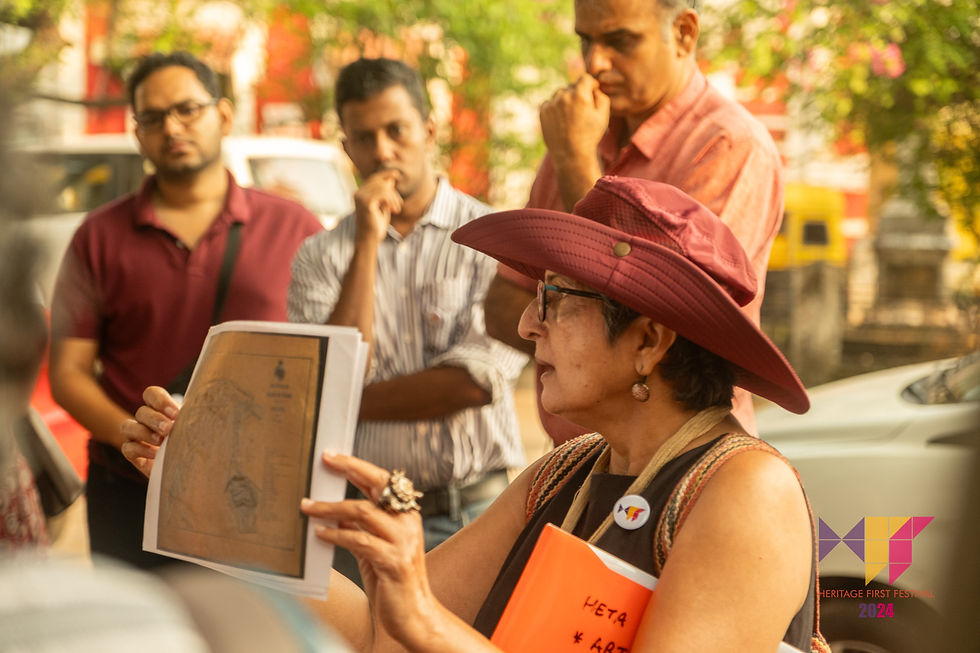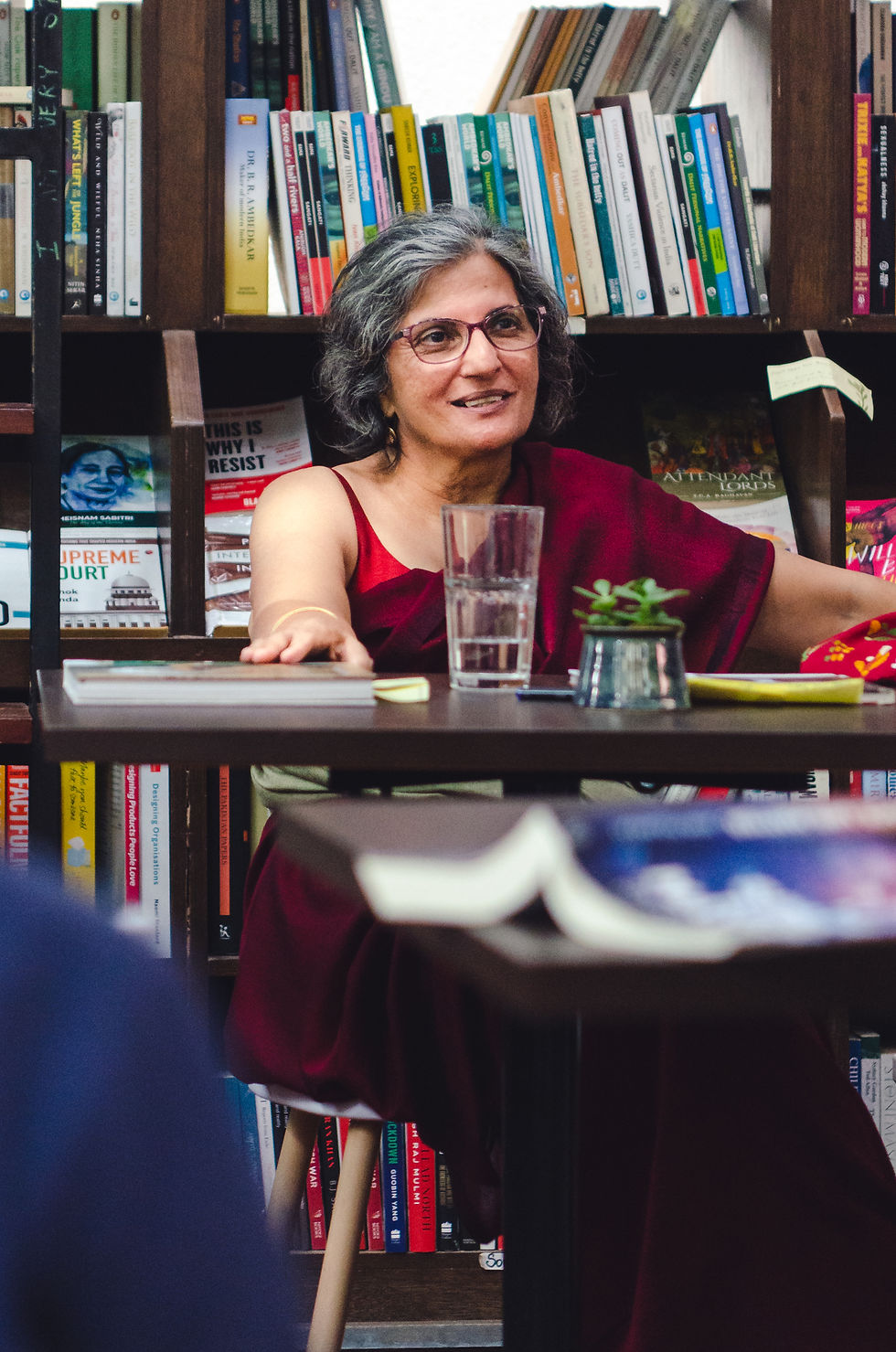Writing to Preserve Heritage: In Conversation with Heta Pandit, Author, Activist & Researcher
- Editorial Team

- Jul 27
- 5 min read
Updated: Aug 9

Heta Pandit’s journey began in the forests of Tanzania and led her to the old homes and quiet corners of Goa. Along the way, she discovered that writing could do more than document; it could preserve. In her work, heritage isn’t just found in architecture but in the stories, skills, and everyday objects that shape a place. At a time when Goa risks losing its past to unchecked development, her storytelling has become a quiet form of resistance, rooted, observant and deeply human.
Read on to get a deeper insight into Heta's process of heritage documentation through the written word.
Your journey began with Dr Jane Goodall in Tanzania and shifted to heritage activism in India. How did writing become the bridge that connected your conservation work with preserving the Goan collective memory? At the end of my working stint with Dr Jane Goodall, we went on a trip to nearby Zanzibar, where I saw the Sultan of Zanzibar’s palace and the harem outside the palace. This harem was unlike the main palace; it was a tall tower where he used to house the ladies of the palace. The tower had just one door and a few windows at the top, providing some light and air. This was appalling cruelty and abuse, but it was also architecture as evidence of history. That is when I began to see architecture as a bridge that preserved memory.
What major challenges did you have to overcome in your journey of documenting fading Goan architecture? The main challenges were the reluctance of the government to support the cause and the lack of finances available to the owners, multiple ownerships, ambiguity of ownership, litigations and disputes over the properties.

The grinding stone being used as part of a wedding ritual in Goa. Picture from Stories from Goan Houses. Shot by Daniel D'souza. You’ve said that heritage lives not just in buildings, but in people. How do you go about earning the trust of communities and encouraging them to share their stories?
What is a heritage building if there are no people and people's stories that surround it? It is the personalities of the people who inhabit these houses that shape the personality of the homes.
There are two ways to approach this. One is to get an introduction through someone who knows both parties well. This ensures both interviewer and interviewee are in a safe, comfortable space. The other is to develop your network, establish a reputation through the work you do and build a comfortable space. The second option takes longer but is more enriching and leaves nothing to ambiguity.
Across 11 books - from Houses of Goa to Stories from Goan Houses - you’ve documented homes as living archives. What does the writing process look like for you, from field research, conversations with families, to weaving cultural context into essays and stories?
Every project has been different, a learning experience, an unravelling of the truth, the truth behind the truth, the stories behind the layers and layers of stories. The writing comes naturally, organically. It is the drawing out of the stories that takes the effort. Frankly, once storytellers open up, it is no effort at all!

Members from the Bendkar house sharing memories from the house. Photo from the book Stories from Goan Houses. Shot by Daniel D'souza You’ve described heritage preservation as vital for environmental resilience and collective wisdom. What are some major elements that you’ve come across that exist as proof of this?
Take the materials used and the intellectual property that has gone into the building of these houses. If you open Hidden Hands-Master Builders of Goa, you will see professionals there that you will not even find now. Where do we see people who are experts at building random rubble compound walls? Or people who weave mats and bamboo baskets?
6. Your writing has sparked awareness and action. How do you balance being a storyteller, activist, and scholar when engaging with readers and policymakers?
My job is to create interest, awareness and love for the Goan heritage. Once the dying embers are lit, the force of the flame increases and the light shines of itself! People begin to see their heritage for what it is, and they begin to care, to conserve and to share what they have learnt.
7. Goa now faces rapid urbanisation. What role can writing play in safeguarding architectural identity and everyday cultural practices?
I am a writer, so I have those tools and skills at hand to spread the awareness and education. There are others with other skills, and each one of us must use what they know-their knowledge and skills-to do whatever they can. This unchecked and unregulated urbanisation is non-sustainable, destructive and irreversible. I met a taxi driver once who gave me a lecture on how Goa was being destroyed and how he and his small band of village folk from Morjim were trying to fight the builders!

In a time where attention spans are short and visuals dominate, how do you get your stories to reach beyond traditional ‘readers’? For instance, we know you’ve conducted multiple Walking Tours that take people through the history you document.
Most people who come on the heritage walks are either locals or people who have settled here recently and want to know more about the land of their adoption. Nothing can come close to that experience! Once you have walked through a city and have learnt about the history, geography, and social life of the neighbourhood, you will never forget it. You will repeat it to visitors who come to your home from outside Goa, and they will, in turn, see Goa through a different lens.

Vishnu Harvalkar with brooms made from seasonal produce. Pictures from the book Stories from Goan Houses, shot by Daniel D'souza. What’s the next step in your journey of documenting heritage & preserving history?
The next book is on the Objects from Goan homes and the memories associated with these objects. There are over 100 objects that have gone out of use, but there are memories associated with these objects, in the form of proverbs, songs, lullabies and nonsense rhymes. Pournima Kerkar from Keri Sattari has done a fantastic job on this subject, and I have translated her book from Marathi to English. It is scheduled to be out by January 2026.

Shubdha Chari demonstrating the how the household object called Davvli Mann doubles up as a musical instrument. What advice would you offer to emerging writers who want to use storytelling as a tool to document and preserve cultural and environmental heritage?
Listen. Talk less. Write. Touch chords. Touch hearts first. Then use your head.

Heta Pandit is a Goa-based writer, researcher and heritage activist who co-founded the Goa Heritage Action Group in 2000, serving as its long-time vice chairperson. Passionate about conserving Goa’s architecture and culture, she has authored eleven books, including Houses of Goa and Stories from Goan Houses.
Before turning to heritage work, she supported Jane Goodall’s chimpanzee research in Tanzania, later volunteering with Bombay Environmental Action Group and serving as secretary of the Indian Heritage Society’s Bombay chapter. Her writing connects conservation, memory and community, nurturing public awareness and respect for Goa’s living past.




Comments